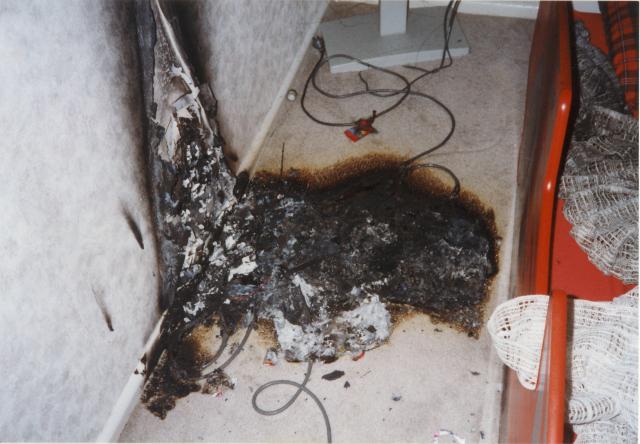ENVIRONMENT Minister Ryan Smith discusses the dust problems in Brooklyn with The Weekly reporter Benjamin Millar.
Q. Is this your first visit to Brooklyn?
A. This is my first visit to the site, but I have been well acquainted with the issue through the news, and the EPA have kept me well in touch with what’s going on. The briefings I’ve had with the EPA have given me a very good understanding of what was needed, they’ve certainly been the ones on the ground for a very long time, dealing with odour issues as well as the dust issues. We had a meeting with Brimbank [Council] only a few weeks ago and asked ‘what would you need from the state government to address these things, in order to have the local industry groups get on board with the rate scheme?’, and the figure that we came up with of $900,000 seemed to be the amount that along with the council’s contribution seemed to be what we needed to get this progressed.
Q. Can you provide some indication as to what that $900,000 will go towards?
A. The $900,000, along with the council contribution and the rates charge, will seal Bunting Road and Jones Road, which have been identified as the two major causes of the dust problem we have in the area
Q. How were you able to secure the funding?
A. The previous government basically said these are council roads and not a state responsibility, so we’re not going to worry about it, even though these problems have been evident for a very long time. In my portfolio as environment minister I often talk about the need for any community in the area to have clean water and to have clean air, and clearly the case here is that they don’t have that clean air, so I took it on myself to identify how we could move forward and with the EPA identifying that the road was the issue that’s where we directed the money to.
Q. Given this is your first visit, how has your impression of the area compared to what you expected?
A. It is as it was explained to me. I think the residents groups are exactly right in their concerns about the dust issues, you can see that on a less damp day that there would be a lot of dust, that if it was windy the dust would go across the neighbourhood and across the community. It doesn’t matter whose responsibility the road is, the air quality issues are issues that affect everyone and it falls fairly and squarely in my area, with the EPA as the authority under my responsibility, so action needed to be taken. It doesn’t matter whose responsibility the actual bitumen is, we all need to get together and make it happen. And it shows what can happen when state and local councils are actually talking to each other and take on that joint responsibility, it shows what happens when industry realises the impact they’re having on the nearby community and it also shows what can happen when residents make their voices heard. When you get all those things in line, we actually do get things done.
Q. If this was anywhere else in Melbourne, can you imagine this situation in 2013?
A. It’s very bad, it would be very tough. I’m just very pleased we’ve been able to address it, it’s been a long-running issue and if I can put a political comment in, it’s Labor heartland, they ignored it for a very, very long time and it took us to take the action and to work with council and not to say ‘look it’s your problem, you deal with it’. We’ve got to work together. In the council document Brooklyn Evolution, the top two priorities are to seal these roads. We’ve got a lot of actions planned and a lot of actions to be taken in the Brooklyn precinct, but the top two are the upgrade to these roads. There have been calls from the opposition for us to put a taskforce together to address these issues. The fact of the matter is it’s a council document, a council action plan, it’s not for the state government to come in and tell the council how to do it, but I think today’s announcement shows that we’re happy to assist the council. So from a state government point of view or a government agency point of view, we’ll help where we can, but as far as implementing their plan we’re going to leave it to council to do that and we think they’re well placed to do so.
Q. EPA monitoring shows industry is responsible for about half of the dust pollution, what input are you seeking from them towards a solution?
A. The EPA’s been very good at cracking down on industry in recent times, they have put some particular attention on these issues. That will continue. There’s guidelines we need to adhere to, there’s regulations about odour and noise and dust levels so the EPA will continue to enforce those regulations.
Q. Are you comfortable the EPA has appropriate power to deal with that in a timely and adequate fashion?
A. John [Merritt, EPA CEO] and his team are very strong regulators and will continue to ensure that we get the best outcome we can. It’s a big issue for residents, I’m sure.
FOLLOW THE STORY
STREETS SEALED: $1m ‘rescue’ might not beat pollution
WORK STARTS: Early 2014 hope
HAD ENOUGH: Brooklyng residents moving out
WHAT DO YOU THINK? Post a comment below






